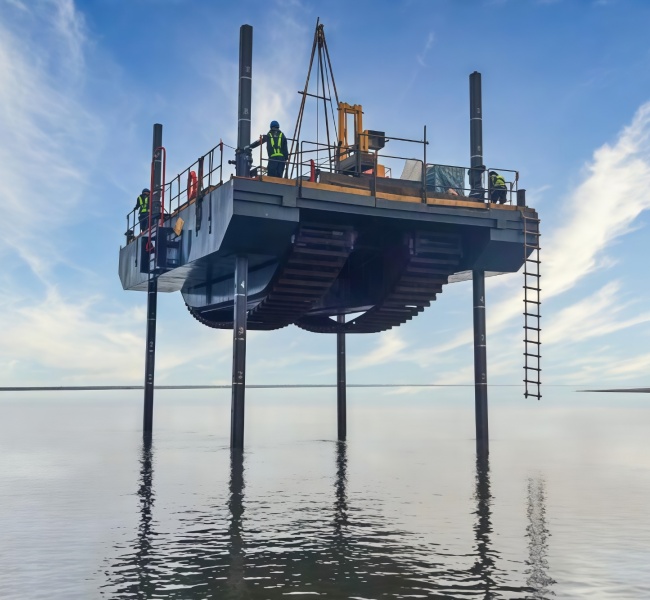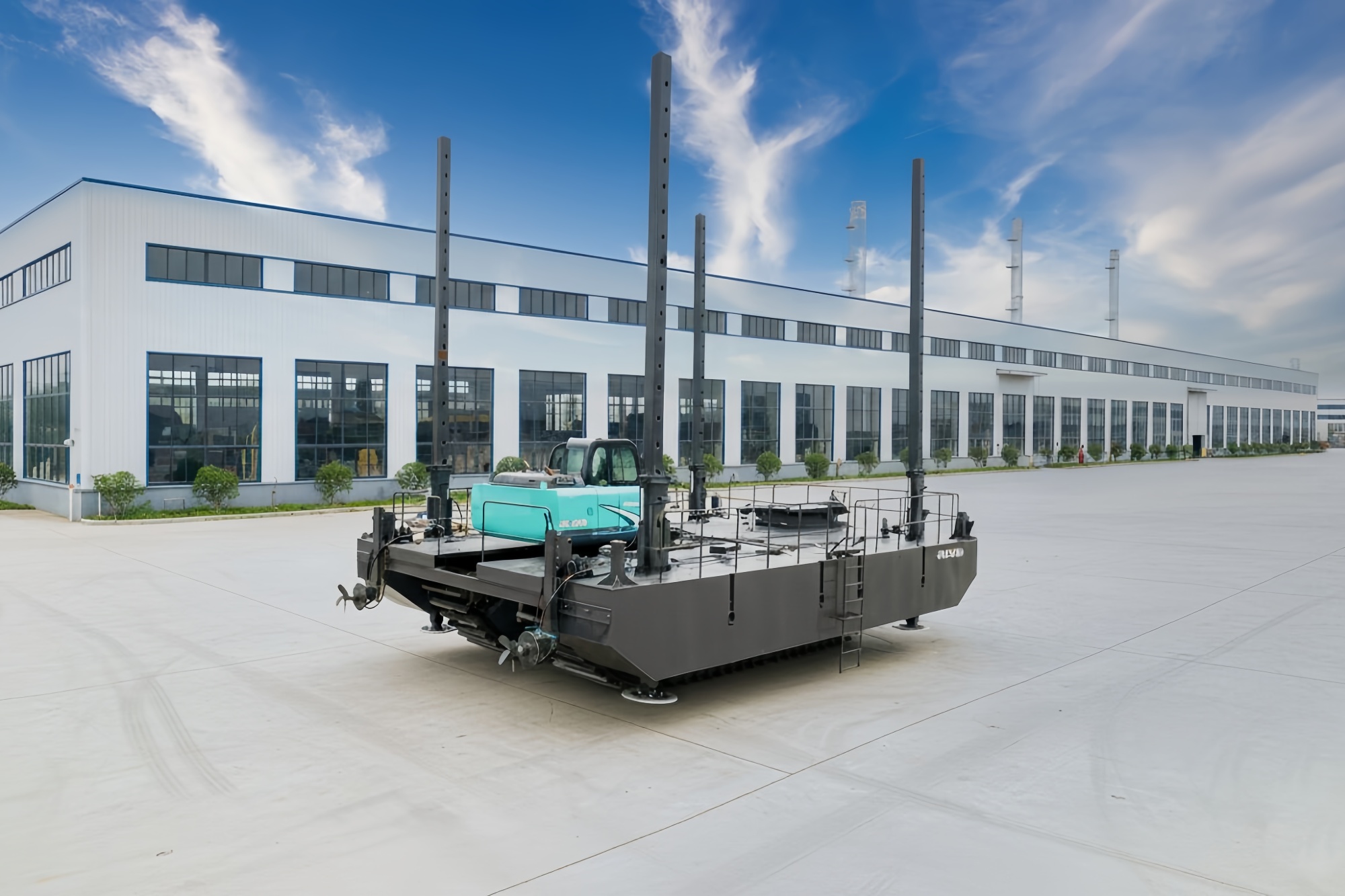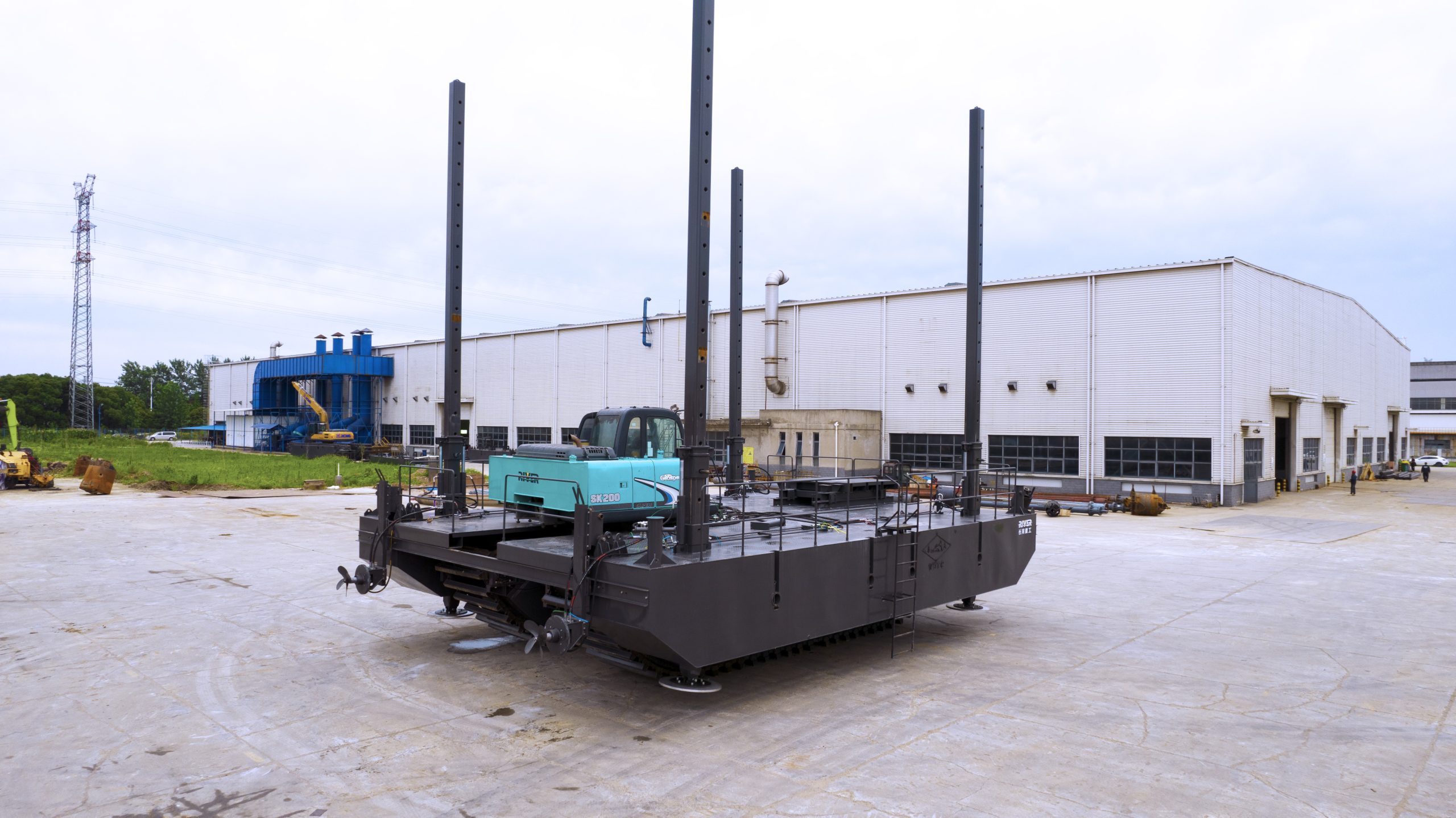Amphibious Jack-up Platform
Breaking Boundaries: A Dual-purpose Work Platform for Land and Water
Amphibious Jack-up Platform Descriptions
Amphibious Jack-up Platform, also called as Jack-up Rig, Jack-up Barge or Jack-up Work Platform, this is a very special and powerful marine engineering equipment, combining the features of a ship, a platform, and an amphibious vehicle. Its core features can be summarized as follows: it can float on the water, land on the bottom in shallow water or on mudflats, and use retractable legs to lift the platform out of the water to form a stable operating base.
Key Features & Functions

1.Liftable Legs
Core Function: This is where the name “jack-up” comes from. The platform is typically equipped with three or four (sometimes more) massive legs.
Operational Method: After reaching the target location, the legs are lowered or placed on the seabed via a hydraulic or electric gear system. The massive platform body is then lifted upward along the legs, completely out of the water.
Purpose: To create a completely stable working surface unaffected by waves, just like on land.
2.Amphibious Capability
Core Function: This is where the name “amphibious” comes from. The platform can float in deep waters as well as operate in extremely shallow waters, intertidal zones, and even flat mudflats.
Operational Method:
Floating Mode: During transfers or navigation, the legs are raised, allowing the platform to float on the water like a boat.
Bottom-Sit Mode: In shallow waters, the platform’s tracks can land directly on the solid seabed, providing a walking surface.
Jump-Up Mode: In deeper waters or on soft seabeds, the legs are used to raise the platform.
3.Flat and Wide Deck Platform
Features: A vast, open deck space with a strong carrying capacity. Its dimensions can be customized to meet personnel, equipment, and payload requirements.
Purpose: It can accommodate large amounts of materials and equipment (such as drilling rigs, diesel engine sets, and other exploration equipment), or serve as living quarters and work areas. It is essentially a mobile “offshore construction site” or “temporary island.”
4.Self-Propelled or Towable Capability
Self-Propelled: Equipped with its own propulsion system (propellers), it can move between different work sites independently, offering greater maneuverability.
Non-Self-Propelled: Requires tugboats for transfer and is generally less expensive to build.

Performance & Operational Characteristics

Excellent Stability
Once the platform is raised, its operation is completely unaffected by waves and currents. This is crucial for operations requiring high-precision lifting, equipment installation, or precise measurement.

Strong Environmental Adaptability
It can adapt to varying water depths, from shallows of tens of centimeters to tens of meters, and in a variety of geological conditions, from hard seabeds to soft mudflats. The base of the pile legs typically features “pile shoes” to distribute pressure and prevent subsidence.

Versatile and Modular Design
The deck platform can be customized to meet diverse work requirements, including installation of power equipment (diesel engine units), work cabins, scaffolding, small cranes, winches, and more. Flexible functional modules are provided to meet diverse construction needs.
Applications of Amphibious Jack-Up Platforms
Offshore Wind Farm Construction and Maintenance
Offshore Wind Farm Construction and Maintenance
Transporting and hoisting oversized components like towers, nacelles, and blades, providing a stable deck as a construction base.
Construction of Cross-Sea Bridges and Subsea Tunnels
Construction of Cross-Sea Bridges and Subsea Tunnels
Serving as a stable working platform for pier construction, piling, and component installation, especially in shallow waters.
Port and Coastal Infrastructure Projects
Port and Coastal Infrastructure Projects
Used for wharf expansion, breakwater construction, and dredging support, capable of working in intertidal zones.
River Advantages of Design and Manufacturing of Amphibious Jack-up Platform
1.Deep river channel experience defines the platform’s practical performance
With over 20 years of experience in river channel construction and equipment manufacturing, serving numerous domestic water conservancy agencies, we have a deep understanding of complex working conditions. The design of each platform is informed by real-world project feedback and continuous iteration.
2.Inherited in amphibious technology, purpose-built for complex scenarios
As a professional manufacturer of amphibious excavators, we have leveraged our high ground contact pressure track technology and innovatively applied it to jack-up platforms. The resulting chassis is more stable and adaptable, meeting the needs of diverse exploration scenarios, including mudflats and shallow waters.
3.Proven platform case studies, customer-proven reliable solutions
We have successfully delivered multiple amphibious jack-up platforms, all of which have been operating stably and earning widespread acclaim in customer projects. From design to manufacturing, we maintain complete control, ensuring field-proven quality.
Amphibious Jack-up Platform Series
FIND YOUR RIGHT SOLUTION WITH RIVER HEAVY INDUSTRY
At RIVER HEAVY INDUSDUSTRY , we are committed to the delivery of quality amphibious excavators and excavator attachments. Please fill out the form below to get in touch with us! We’ll get back to you as soon as we can.

